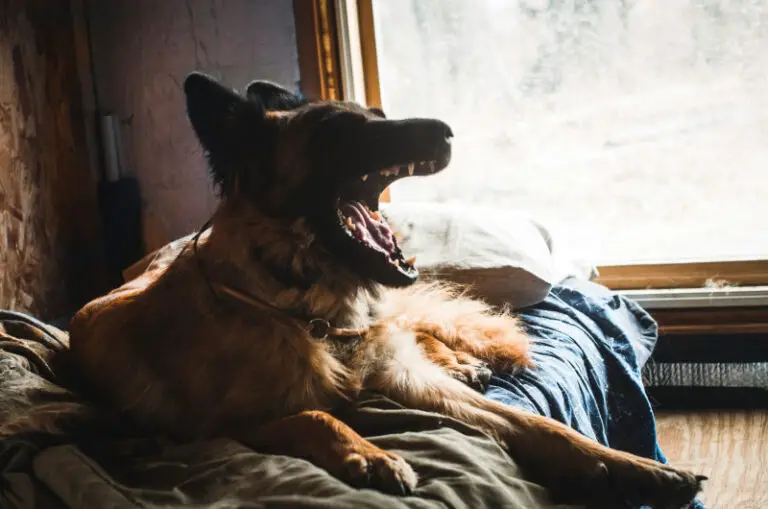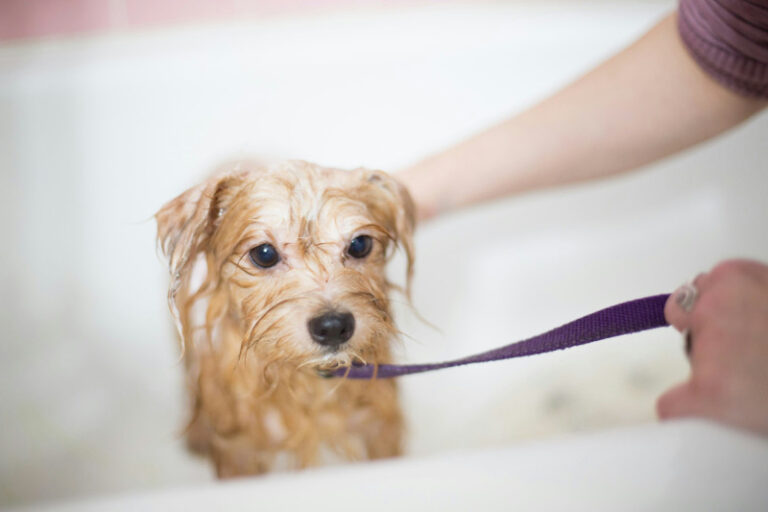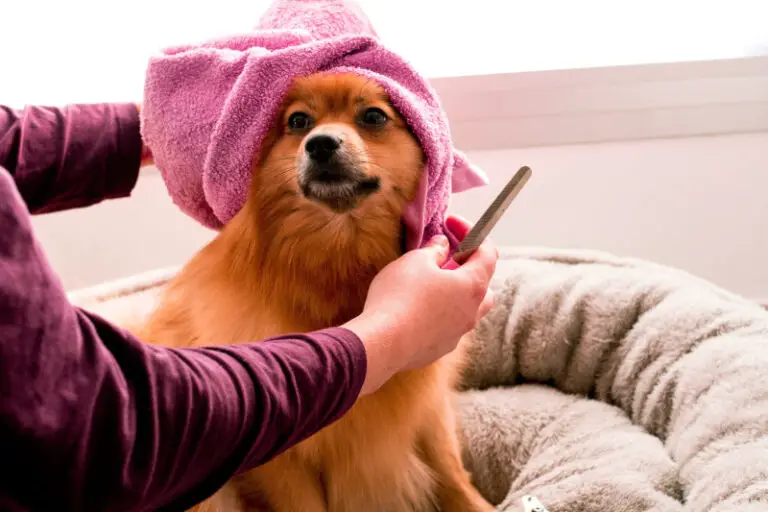When choosing a dog, it is important to look beyond its cute appearance or personality. As a future owner, you must know if you are capable of taking care of it properly and providing the care it will need. Thinking of getting a Yorkshire terrier but don’t know how to take care of a Yorkie? Here we leave you a summary of the basic requirements and advice that every Yorkie lover should consider.
Table of Contents
Home requirements
As a general rule, the Yorkshire Terrier adapts well to any space, even if it is a small apartment. However, you have to look beyond the space before bringing a Yorkie into your home.
First of all, it is not recommended to keep this dog as a pet around small children. Due to its diminutive size, the Yorkie can get hurt or frightened and exhibit aggressive behavior during play. Rough handling by children is known to result in biting or scratching.
On the other hand, the dominant temperament of the breed makes it a conflictive companion in the presence of other animals ( another dog, a cat, a rabbit, etc. ). To avoid this problem, it is always recommended to socialize the Yorkie with other pets from an early age.
Likewise, it is noted that Yorkies do not tolerate being alone for many hours a day. This breed needs attention and responds best when kept close to a human companion. Otherwise, you may develop bad habits and experience separation anxiety.
Exercise
Don’t let the size of the Yorkshire terrier confuse you! Even small dogs require exercise to stay healthy, both physically and mentally. Daily exercise is one of the basic Yorkie care.
This dog will benefit from both moderate exercises, such as brisk walks, and short, intense activities, such as chasing a tennis ball. Dog sports that involve skills like obedience or agility will also be great for challenging his mind and keeping him healthy.
How long should a Yorkie be walked for?
Taking a 20-25 minute walk, 2-3 times a day, is probably enough for your Yorkie to have fun and burn off all that energy. Be sure to monitor his behavior regardless of whether you’re leading him on or off a leash; Remember that Yorkies like to chase things and don’t hesitate to try to pick fights with other dogs.
Although the Yorkshire Terrier is suited to apartment living, it is an active dog that needs regular exercise. Daily walks can keep him happy and healthy, but keep in mind that some Yorkies need to run and play in addition to hanging out with their owners.
Yorkies love toys, especially if they are squeaky. In that case, it is important to check them every few days to make sure they have not been chewed. They also really enjoy fetching the toys you throw at them.
Consider making your own stuffed ball out of used pantyhose; it can be bigger than a golf ball but smaller than a tennis ball. You will love it!
Another detail to keep in mind is that Yorkshire terriers are not suitable for extreme temperatures, whether they are hot or cold. They are best suited to life in temperate climates and indoors. When you take him out for a walk, try to do it during the warm hours of the day, and put a sweater on him in case it gets very cold.
Cleanliness
This is one of the issues that most often concerns us when we think about caring for a dog. And is not for less. Maintaining the grooming or “grooming” of some breeds can be quite a challenge.
Let’s start talking about hair. The silky coat of the Yorkshire Terrier is very similar to human hair and therefore must be treated with care, always working from the tips to the part closest to the body. If the coat remains long, we must brush it daily using a wide-toothed metal comb together with a good brush.
Many owners prefer to keep the coat short, seeing a groomer every few weeks. But that doesn’t mean you don’t need to comb it regularly; in either case, daily brushing helps keep the coat clean and prevents matting.
Note: Yorkies that have soft, cottony fur, rather than silky, are even more prone to matting.
A tricky area is often the top of the head, as long hair ends up covering and irritating the dog’s eyes. This is the reason why we see that the vast majority of Yorkies have their hair tied up in a ponytail. Some owners prefer to simply keep that part of the hair short.
Because it doesn’t shed as much as other breeds, the Yorkshire Terrier is often classified as a hypo-allergenic dog. However, their dander or saliva can still trigger allergies in sensitive people.
Bathing the Yorkie should be done approximately every 1-2 weeks. It is not necessary to rub the fur to wash it. After you wet it and apply the shampoo, all you need to do is run your fingers through the hair to extract the dirt.
Something very important is to rinse with plenty of water to make sure that there are no traces of soap or shampoo inside the coat. Product residue can dull the coat and cause itching. Finally, it is recommended to apply some type of conditioner and rinse for the last time.
The bath is a good time to check his ears for possible signs of infection (unpleasant odor, redness, brown discharge). The use of sharp objects or swabs to inspect the ear canal is not recommended; in the event of continued scratching or unusual ear odor, this should be evaluated by a qualified veterinarian.
If your Yorkie is watering a lot, then you will need to wipe the corners of his eyes every day. This will help prevent blemishes and scabs on her face.
Other Yorkie care and recommendations to take into account are:
- Small breeds are prone to dental problems, and Yorkshire terriers are no exception. These dogs tend to form a lot of tartar on their teeth, and can even lose teeth at a young age. Be sure to brush them regularly and schedule a professional cleaning with the vet at least once a year.
- It is recommended to trim the nails after each bath. You will know that they are already very long when you can feel the squeaks of their legs against the floor. Keep in mind that a dog’s nails have blood vessels, so if you cut them too short you can end up hurting your dog and causing it to bleed.
- In addition, your dog may not cooperate the next time you want to. If you don’t have experience trimming a dog’s nails, it’s best to consult your vet or groomer.
- When you’re grooming your Yorkie, don’t forget to check the anal area and trim some of the hair in the area if it’s too long.
- Train your dog as a puppy to get used to being brushed and examined. Make this moment a positive experience filled with praise and rewards. This also helps lay the groundwork for more relaxed veterinary exams.
- Check for sores, rashes, or signs of infection, such as redness, tenderness, or swelling in the skin, nose, mouth, eyes, and paws. The dog’s eyes should always be clear, without redness or discharge.
Diet and nutrition
How much food should I give a Yorkshire terrier? How many meals a day?
It is generally recommended to give ½ to ¾ cup of high-quality dry food every day (divided into 2 meals). In this sense, he considers that dogs are like people: they do not all need to eat the same amount of food. For example, a highly active Yorkie will need more food than a couch potato Yorkie.
Never share your food with a Yorkshire terrier. This breed is known to experience digestive upsets, such as vomiting and diarrhea when they consume our food and treats. In addition, nibbling on your plate can result in an overweight dog, which predisposes the Yorkie to different diseases and to live a shorter life.
Keep your pet fit; he rations his food for only 2 meals a day. Of course, clean and fresh water must be available at all times.
How do I know if my Yorkshire Terrier is overweight?
Although this is something that an owner can see with the naked eye, you can always do the following test: place your hands on his back, with the thumbs along the spine and the other fingers extended downwards; you should be able to feel his ribs without having to press hard.
If you can’t, then your dog probably needs less food and more physical exercise.
The quality of the dog food is also an important factor. The better the food, the more nutrition it provides in each serving and therefore the less food you need throughout the day.
Many wonder what to do about candy. While treats can be an essential aid during training, giving too many can also lead to obesity.
As a general recommendation, we also encourage you to seek information on which foods are safe for dogs and which are not, as well as consult the veterinarian if you are concerned about your dog’s weight or diet.
It may interest you: 9 Potential Poisons for Dogs – What Can Poison My Dog?
Physiological needs
Since we are talking about food, it is worth mentioning the issue of physiological needs. In the case of the Yorkshire Terrier, it is known that some can be stubborn and cause problems during this type of training, but the important thing is not to give up in the process.
Because their “accidents” are so small and easy to clean up, many owners prefer to let it slide, but this is a serious mistake. It’s best to show them where to go early on and reward them for relieving themselves in the right place.
A characteristic of the Yorkie is that it does not tolerate rain, so do not expect it to go outside if the weather is rainy. It is recommended to train them so that they also learn to do “their thing” on paper or have a covered area that serves as a bathroom in these cases.



